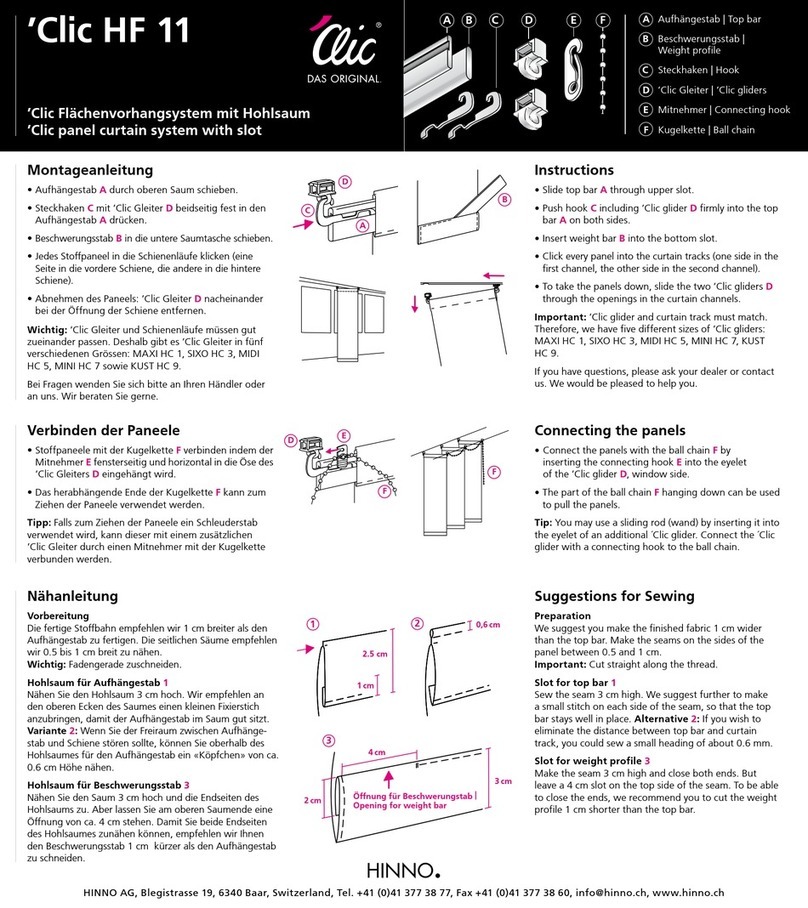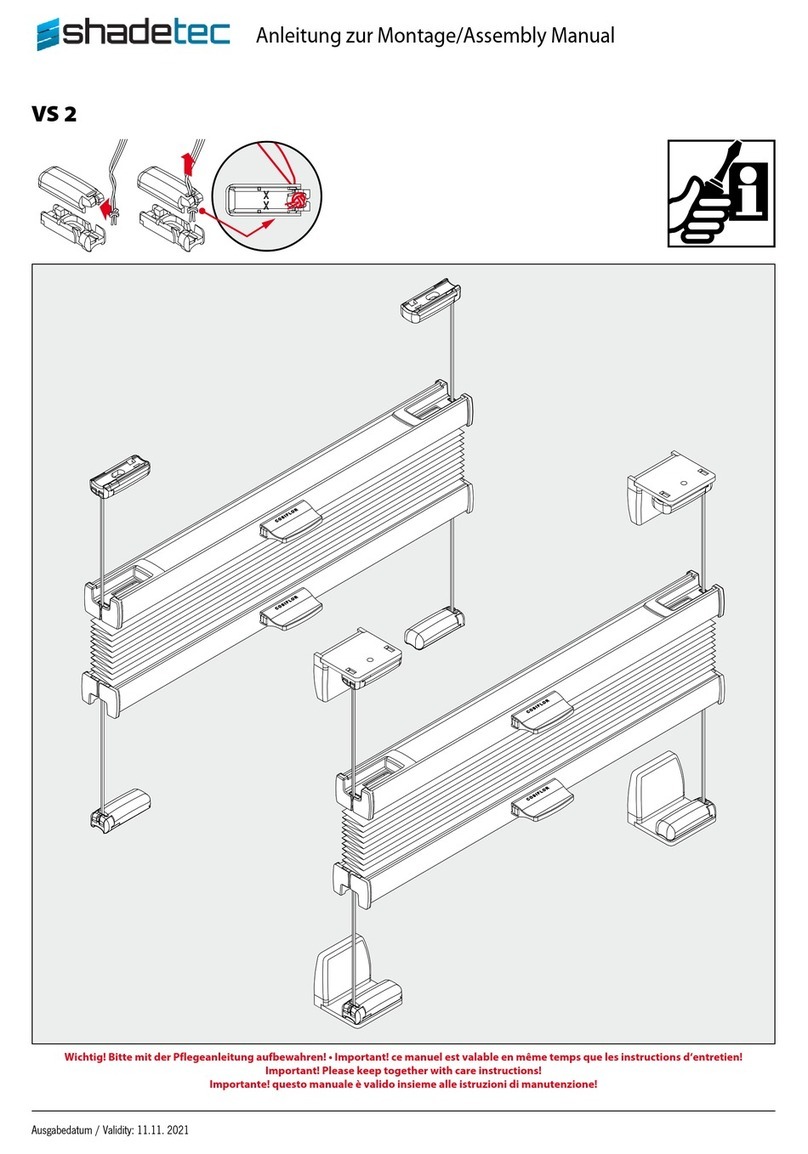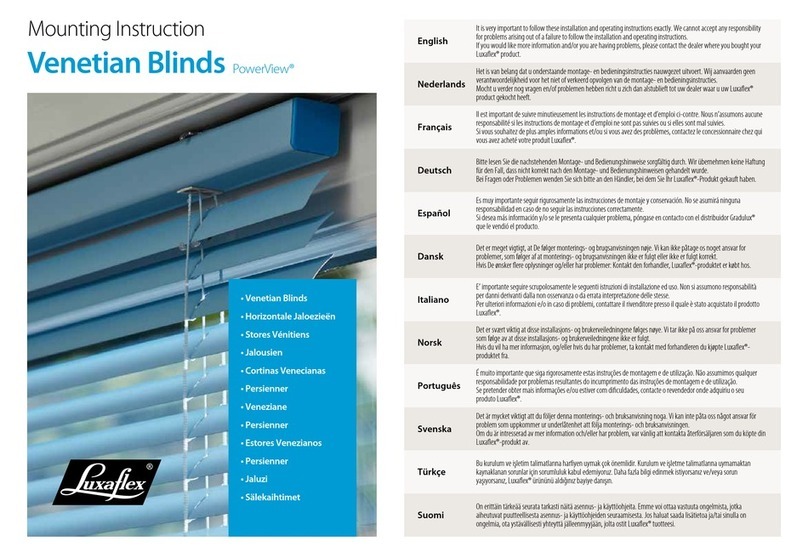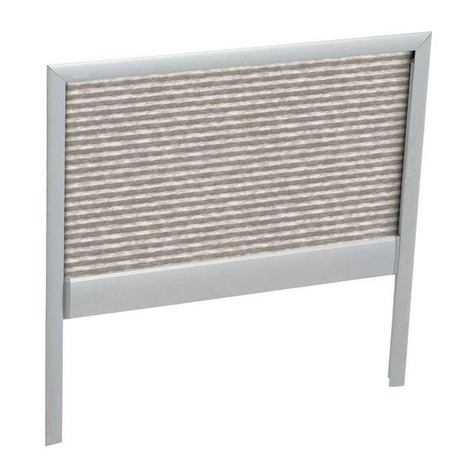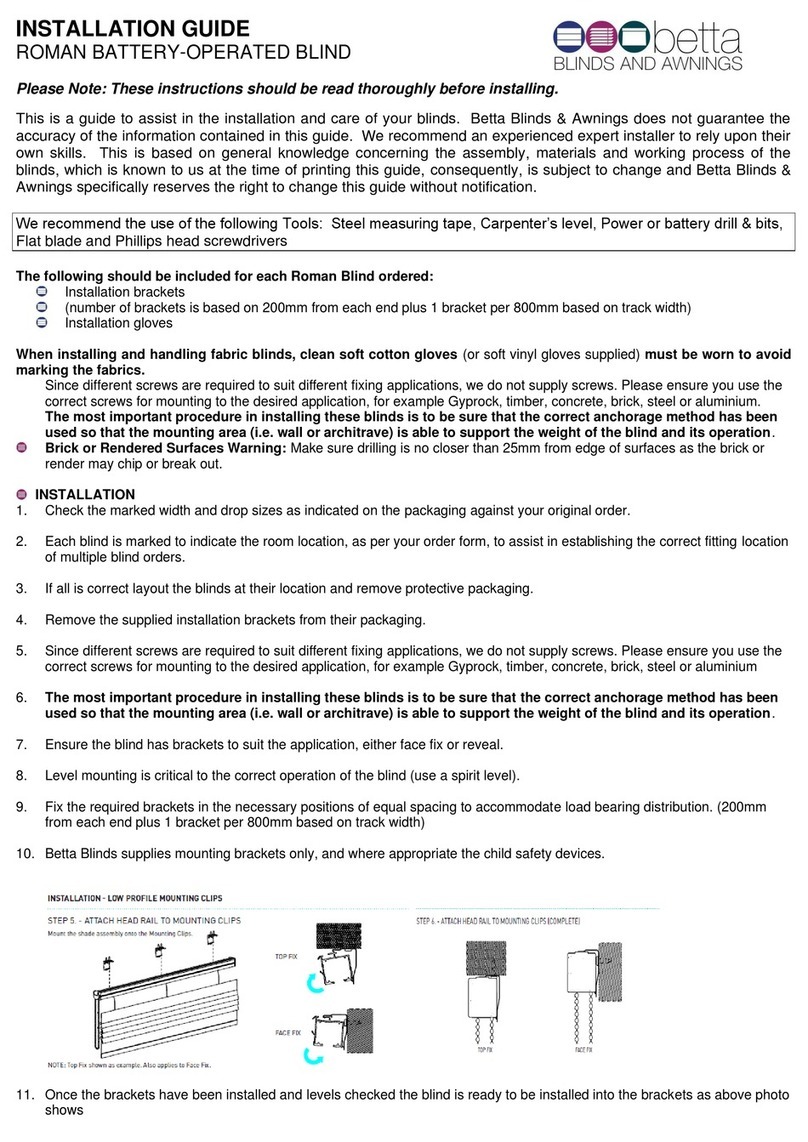Clic HF 12 User manual

2.5 cm
1
2
C
A
D
F
F
E
D
2 cm
3 cm
4 cm
Öffnung für Beschwerungstab |
Opening for weight bar
1 cm
0,6 cm
2.5 cm
12
C
A
D
B
F
E
D
F
2 cm
3 cm
4 cm
3
Apertura per barra di carico |
Fente pour la barre de lestage
2.5 cm
1
2
C
A
D
F
F
E
D
2 cm
3 cm
4 cm
Öffnung für Beschwerungstab |
Opening for weight bar
2.5 cm
1
2
C
A
D
F
F
E
D
2 cm
3 cm
4 cm
Öffnung für Beschwerungstab |
Opening for weight bar
2.5 cm
1
2
C
A
D
F
F
E
D
2 cm
3 cm
4 cm
Öffnung für Beschwerungstab |
Opening for weight bar
1 cm
0,6 cm
2.5 cm
12
C
A
DB
F
E
D
F
2 cm
3 cm
4 cm
3
Apertura per barra di carico |
Fente pour la barre de lestage
1 cm
0,6 cm
2.5 cm
12
C
A
D
B
F
E
D
F
2 cm
3 cm
4 cm
3
Apertura per barra di carico |
Fente pour la barre de lestage
1 cm
0,6 cm
2.5 cm
12
C
A
DB
F
E
D
F
2 cm
3 cm
4 cm
3
Apertura per barra di carico |
Fente pour la barre de lestage
1 cm
0,6 cm
2.5 cm
12
C
A
DB
F
E
D
F
2 cm
3 cm
4 cm
3
Apertura per barra di carico |
Fente pour la barre de lestage
’Clic Flächenvorhangsystem mit Klettverschluss
’Clic panel curtain system with hook-and-loop tape
’Clic HF 12 E FA B C D
HINNO AG, Blegistrasse 19, 6340 Baar, Switzerland, Tel. +41 (0)41 377 38 77, Fax +41 (0)41 377 38 60, info@hinno.ch, www.hinno.ch
Montageanleitung
• Steckhaken Cmit ’Clic Gleiter Dbeidseitig fest in den
Aufhängestab Adrücken.
• Stoffbahn mit aufgenähtem Flauschband auf das Klett-
band am Aufhängestab Adrücken.
• Beschwerungsstab Bin die untere Saumtasche schieben.
• Jedes Stoffpaneel in die Schienenläufe klicken (eine
Seite in die vordere Schiene, die andere in die hintere
Schiene).
• Abnehmen des Paneels: ’Clic Gleiter Dnacheinander
bei der Öffnung der Schiene entfernen.
Wichtig: ’Clic Gleiter und Schienenläufe müssen gut
zueinander passen. Deshalb gibt es ’Clic Gleiter in fünf
verschiedenen Grössen: MAXI HC 1, SIXO HC 3, MIDI
HC 5, MINI HC 7 sowie KUST HC 9.
Bei Fragen wenden Sie sich bitte an Ihren Händler oder
an uns. Wir beraten Sie gerne.
Instructions
• Push hook Cincluding ’Clic glider Dfirmly into the top
bar Aon both sides.
• Press panel with knitevelours onto the top bar A.
• Insert weight bar Binto the bottom slot.
• Click every panel into the curtain tracks (one side in the
first channel, the other side in the second channel).
• To take the panels down, slide the two ’Clic gliders D
through the opening in the curtain channels.
Important: ’Clic glider and curtain track must match.
Therefore, we have five different sizes of ’Clic gliders:
MAXI HC 1, SIXO HC 3, MIDI HC 5, MINI HC 7, KUST
HC 9.
If you have questions, please ask your dealer or contact
us. We would be pleased to help you.
Suggestions for Sewing
Preparation
We suggest you make the finished fabric 1 cm wider
than the top bar. Make the seams on the sides of the
panel between 0.5 and 1 cm.
Important: Cut straight along the thread.
Sewing the knitevelours 1
Sew the knitevelours on the back of the panel. To
narrow the gap between top bar and the tracks, we
suggest you use a knitvelours tape of 2.5 cm.
Slot for weight profile 3
Make the seam 3 cm high and close both ends. But
leave a 4 cm slot on the top side of the seam. To be able
to close the ends, we recommend you to cut the weight
profile 1 cm shorter than the top bar.
A Aufhängestab | Top bar
B Beschwerungsstab |
Weight profile
C Steckhaken | Hook
D ’Clic Gleiter | ’Clic gliders
E Mitnehmer | Connecting hook
F Kugelkette | Ball chain
Nähanleitung
Vorbereitung
Die fertige Stoffbahn empfehlen wir 1 cm breiter als den
Aufhängestab zu fertigen. Die seitlichen Säume empfeh-
len wir 0.5 bis 1 cm breit zu nähen.
Wichtig: Fadengerade zuschneiden.
Annähen des Flauschbands 1
Machen Sie am oberen Ende auf der Rückseite des Stoff-
paneels nur einen einfachen Falz (je dünner das Paneel,
desto besser die Stapelbarkeit) und nähen dann das
Flauschband darauf. Um den Aufhängestab gut abzude-
cken, empfehlen wir, ein 2.5 cm breites Flauschband. Nä-
hen Sie das Flauschband auf die Rückseite der Stoffbahn.
Hohlsaum für Beschwerungsstab 2
Nähen Sie den Saum 3cm hoch und die Endseiten des
Hohlsaums zu. Aber lassen Sie am oberen Saumende eine
Öffnung von ca. 4cm stehen. Damit Sie beide Endseiten
des Hohlsaumes zunähen können, empfehlen wir Ihnen
den Beschwerungsstab 1 cm kürzer als den Aufhängestab
zu schneiden.
Connecting the panels
• Connect the panels with the ball chain Fby inserting
the connecting hook Einto the eyelet of the ’Clic glider
D, window side.
• The part of the ball chain Fhanging down can be used
to pull the panels.
Tip: You may use a sliding rod (wand) by inserting it into
the eyelet of an additional ´Clic glider. Connect the ´Clic
glider with a connecting hook to the ball chain.
Verbinden der Paneele
• Stoffpaneele mit der Kugelkette Fverbinden indem der
Mitnehmer Efensterseitig und horizontal in die Öse des
’Clic Gleiters Deingehängt wird.
• Das herabhängende Ende der Kugelkette Fkann zum
Ziehen der Paneele verwendet werden.
Tipp: Falls zum Ziehen der Paneele ein Schleuderstab
verwendet wird, kann dieser mit einem zusätzlichen
’Clic Gleiter durch einen Mitnehmer mit der Kugelkette
verbunden werden.

F
1 cm
0,6 cm
2.5 cm
12
C
A
DB E
D
3 cm
4 cm
3
2.5 cm
1
2
C
A
D
F
E
D
2 cm
3 cm
4 cm
Apertura per barra di carico |
Fente pour la barre de lestage
1 cm
0,6 cm
2.5 cm
12
C
A
D
B
F
E
D
F
2 cm
3 cm
4 cm
3
Öffnung für Beschwerungstab |
Opening for weight bar
2.5 cm
1
2
C
A
D
F
F
E
D
2 cm
3 cm
4 cm
Öffnung für Beschwerungstab |
Opening for weight bar
2.5 cm
1
2
C
A
D
F
F
E
D
2 cm
3 cm
4 cm
Öffnung für Beschwerungstab |
Opening for weight bar
2.5 cm
1
2
C
A
D
F
F
E
D
2 cm
3 cm
4 cm
Öffnung für Beschwerungstab |
Opening for weight bar
1 cm
0,6 cm
2.5 cm
12
C
A
D
B
F
E
D
F
2 cm
3 cm
4 cm
3
Öffnung für Beschwerungstab |
Opening for weight bar
1 cm
0,6 cm
2.5 cm
12
C
A
DB
F
E
D
F
2 cm
3 cm
4 cm
3
Öffnung für Beschwerungstab |
Opening for weight bar
1 cm
0,6 cm
2.5 cm
12
C
A
DB
F
E
D
F
2 cm
3 cm
4 cm
3
Öffnung für Beschwerungstab |
Opening for weight bar
1 cm
0,6 cm
2.5 cm
12
C
A
DB
F
E
D
F
2 cm
3 cm
4 cm
3
Apertura per barra di carico |
Fente pour la barre de lestage
’Clic HF 12 E FA B C D
HINNO AG, Blegistrasse 19, 6340 Baar, Switzerland, Tel. +41 (0)41 377 38 77, Fax +41 (0)41 377 38 60, info@hinno.ch, www.hinno.ch
Systema di tende a panello ’Clic con velcro
Système ’Clic pour panneaux japonais avec bande velcro
A Asta di sospensione | Tringle
B Barra di contropeso |
Barre de lestage
C Ganci | Crochets
D Scivoli ’Clic | Glisseurs ’Clic
E Traino | Crochet de connexion
F Catena | Chaînette à boules
Istruzione di montaggio
• Premere con forza da entrambi i lati il gancio Ccon lo
scivolo ’Clic Dnell’asta di sospensione A.
• Premere sull’asta di sospensione A il telo di stoffa con
nastro di ratina cucito.
• Infilare la barra di carico Bnella tasca dell’orlo inferiore.
• Cliccare ogni pannello di stoffa nelle guide di scorri-
mento (un lato nella guida anteriore, l’altro nella guida
posteriore).
• Togliere il pannello: Togliere gli scivoli ’Clic uno dopo
l’altro dall’apertura della guida.
Importante: Scivolo ‘Clic e guide di scorrimento devono
essere ben adatte l’una all’altra. Per questo gli scivoli ‘Clic
sono ottenibili in cinque diverse grandezze: MAXI HC 1,
SIXO HC 3, MIDI HC 5, MINI HC 7, KUST HC 9.
In caso di domande si prega di rivolgersi al rivenditore o
a noi, vi daremo volentieri i consigli richiesti.
Instruction de montage
• Fixer solidement des deux côtés le crochet Cavec le
glisseur ’Clic Dsur le chariot A.
• Presser le tissu sur le tringle A avec la bande velcro.
• Glisser la barre de lestage Bdans la poche inférieure
de l’ourlet.
• A l’aide des glisseurs ’Clic D, cliquer chaque panneau
de tissu dans les deux rails (un glisseur dans le rail
avant et un glisseur dans le rail arrière).
• Démontage du panneau : Retirer le premier glisseur
’Clic Ddu rail et basculer le tringle Avers le bas. Reti-
rer le deuxième glisseur ’Clic D.
Important : Les glisseurs ‘Clic et la dimension des rails
doivent être bien adaptés. Il existe à cet effet cinq diffé-
rentes dimensions de glisseurs ‘Clic: MAXI HC 1, SIXO
HC 3, MIDI HC 5, MINI HC 7, KUST HC 9.
Pour toutes questions, veuillez vous adresser à votre re-
vendeur ou chez nous, nous vous conseillons volontiers.
Istruzione di cucitura
Preparazione
Consigliamo di preparare il telo di stoffa finito più largo
di 1 cm rispetto all’asta di sospensione e di cucire gli orli
laterali con una larghezza di ca. 0.5 a 1 cm.
Importante: Tagliare seguendo la direzione del filo.
Cucire il nastro di ratina 1
Piegare una sola volta la stoffa (più sottile è il pannello,
meglio potrà essere sovrapposto) presso l’asta di so-
spensione e cucire il nastro di ratina sul dorso del telo di
stoffa. Per coprire bene l’asta di sospensione, consiglia-
mo di utilizzare un nastro di ratina largo 2.5 cm.
Orlo per barra di contropeso 2
Cucire l’orlo alto 3 cm e chiudere i lati terminali dell’orlo.
Nella parte terminale superiore dell’orlo lasciare un’aper-
tura lunga circa 4 cm.
Fil rouge pour coudre
Préparation
Nous recommandons de confectionner le panneau de
tissu terminé plus large de 1 cm que le rail de suspension
et de coudre les ourlets latéraux d’une largeur de 0.5 à
1 cm environ.
Important: Découper dans le sens des fibres.
Coudre le ruban 1
Faire un ourlet simple (plus mince les chariots de suspen-
sion, mieux l’empilement se fait) et coudre le ruban à
longs au verso du panneau. Pour réduire l’espace entre
le chariot et le rail il faut prendre un ruban à longs plus
large (2.5 cm).
Ourlet pour barre de lestage 2
Nous recomanndons une couture de 3 cm de hauteru,
de fermer les deux côtés et de laisser ouverte une fente
de 4 cm.
Raccorder les panneaux
• Relier les panneaux de tissus à l’aide de la chaîne à
boules F. Raccrocher à cet effet le crochet pour chaîne
Edu côté fenêtre à l’oeillet du glisseur ’Clic D.
• Le bout restant de la chaîne à boules Fpeut être utilisé
pour tirer les rideaux.
Autres indications: Si souhaité, un lance rideau
peut être raccroché à l’oeillet d’un glisseur ´Clic addi-
tionnel. Relier ce glisseur avec un crochet pour chaîne
avec la chaîne à boules.
Collegamento dei pannelli di stoffa
• Collegare i pannelli di stoffa con la catena F,
agganciando il trascinatore Edal lato finestra e
orizzontalmente nell’occhiello dello scivolo ’Clic D.
• Il terminale pendente della catena Fpuò essere
usato per tirare i pannelli.
Ulteriori indicazioni: Se desiderato, fissare un
bastone tiratenda alla catena con scivoli ’Clic supple-
mentari attraverso il trascinatore.
Other Clic Window Blind manuals
Popular Window Blind manuals by other brands
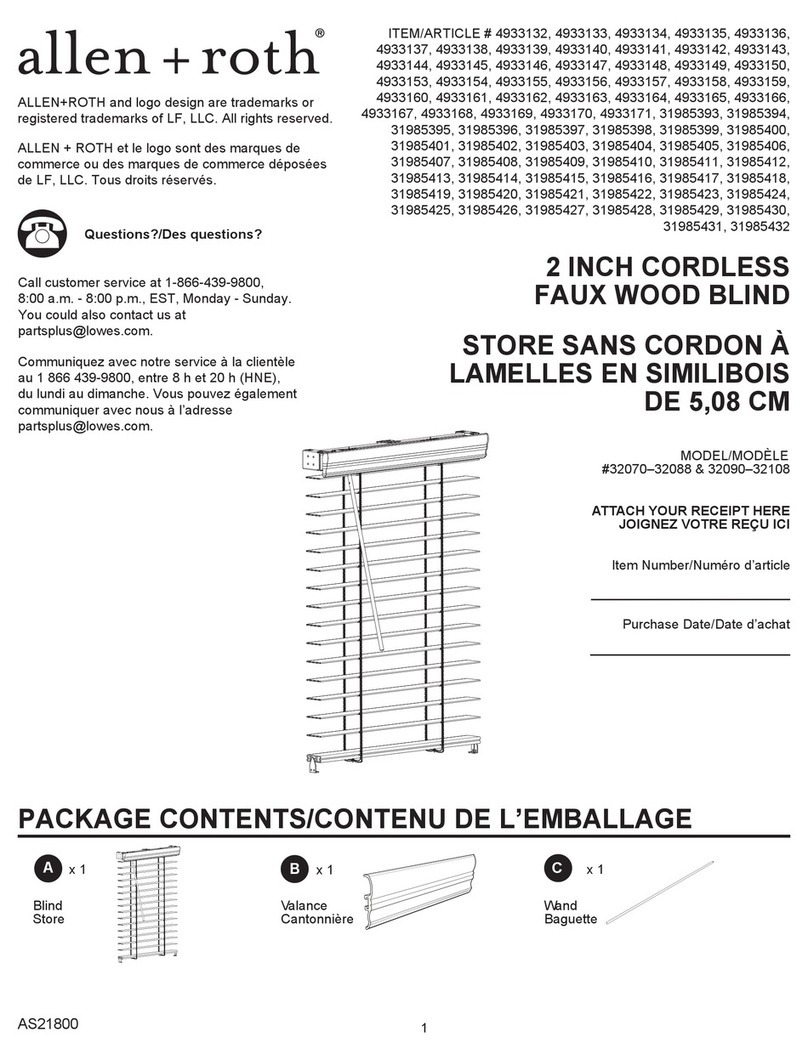
Allen + Roth
Allen + Roth 4933132 instruction manual

Roto
Roto ZJA M installation manual
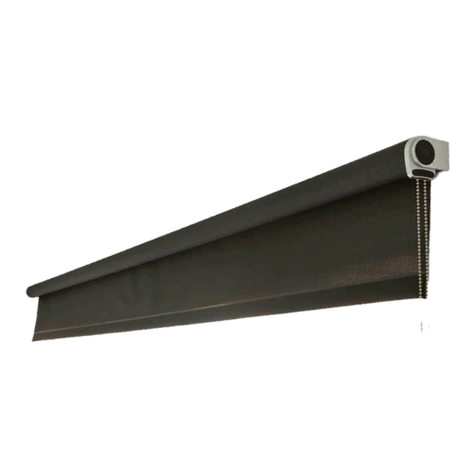
HunterDouglas
HunterDouglas RB 500 Installation

HunterDouglas
HunterDouglas LiteRise Installation

Silent Gliss
Silent Gliss SG 6035 quick start guide
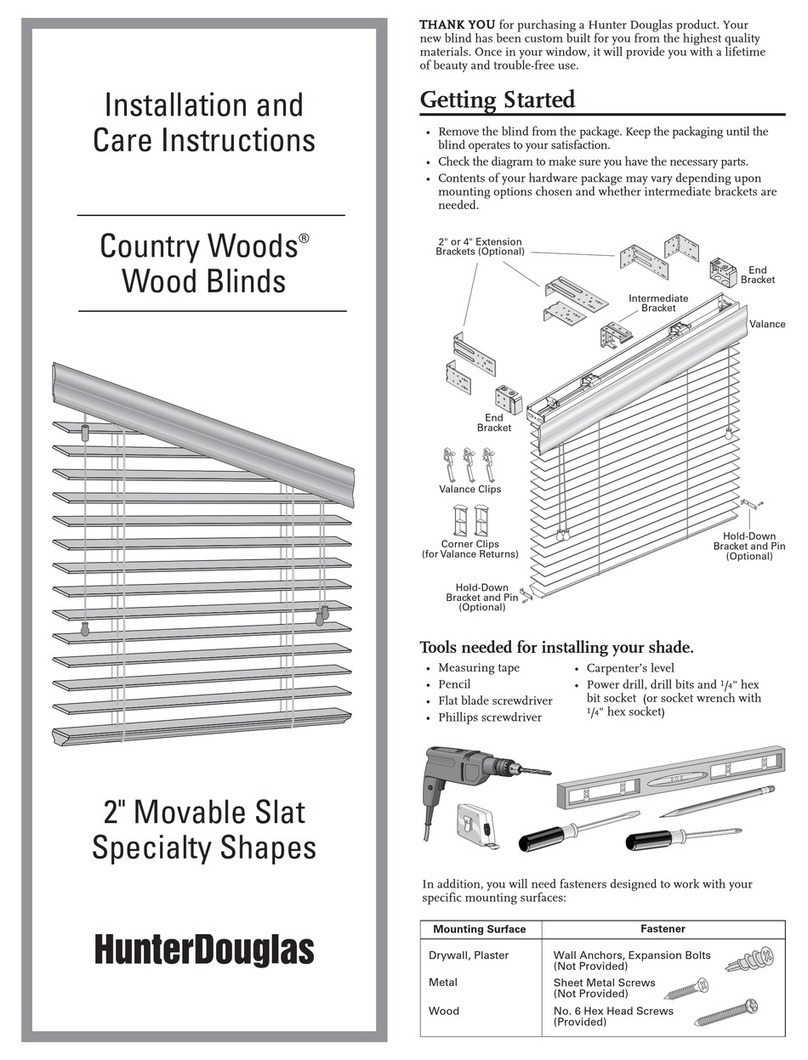
HunterDouglas
HunterDouglas Country Woods INSTALLATION AND CARE INSTRUCTIONS
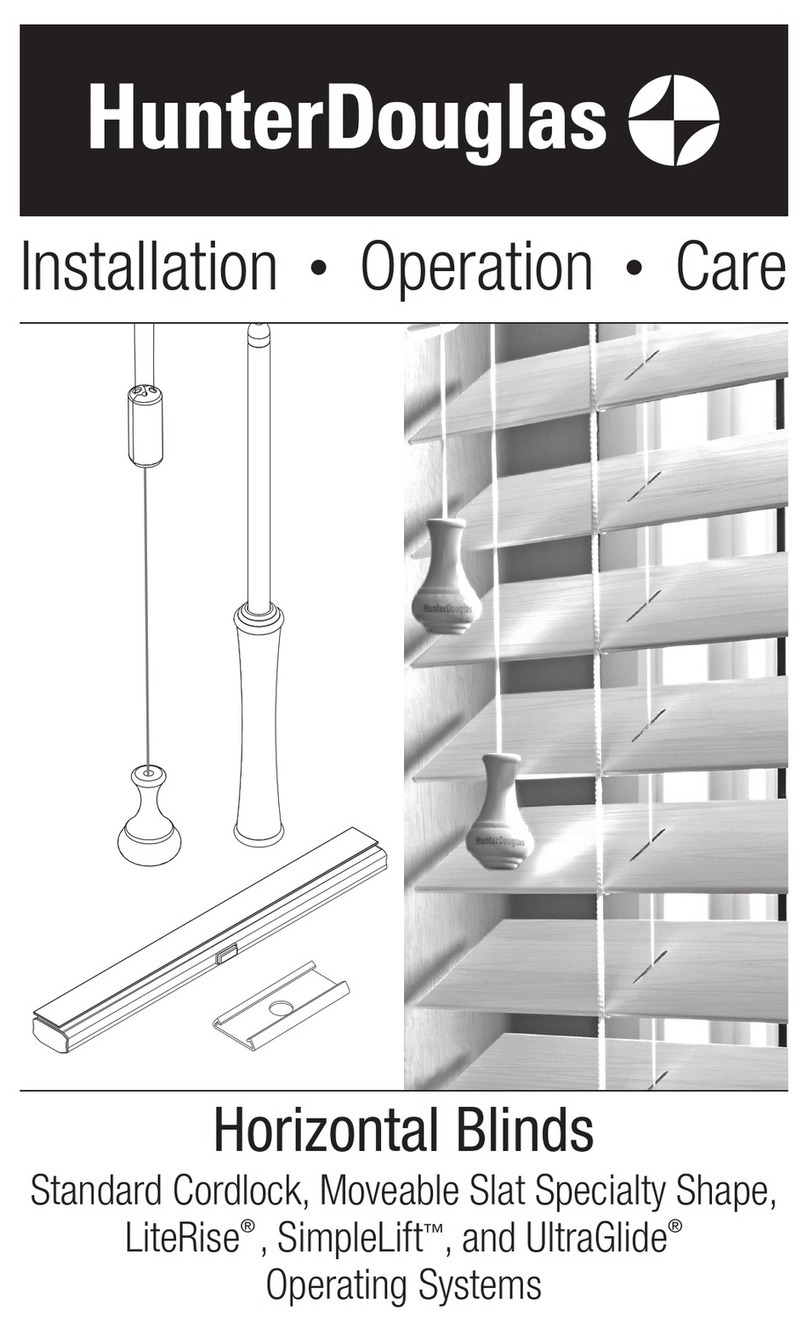
HunterDouglas
HunterDouglas Standard Cordlock, Moveable Slat Specialty... Operating Systems

HunterDouglas
HunterDouglas EverWood Operating Systems
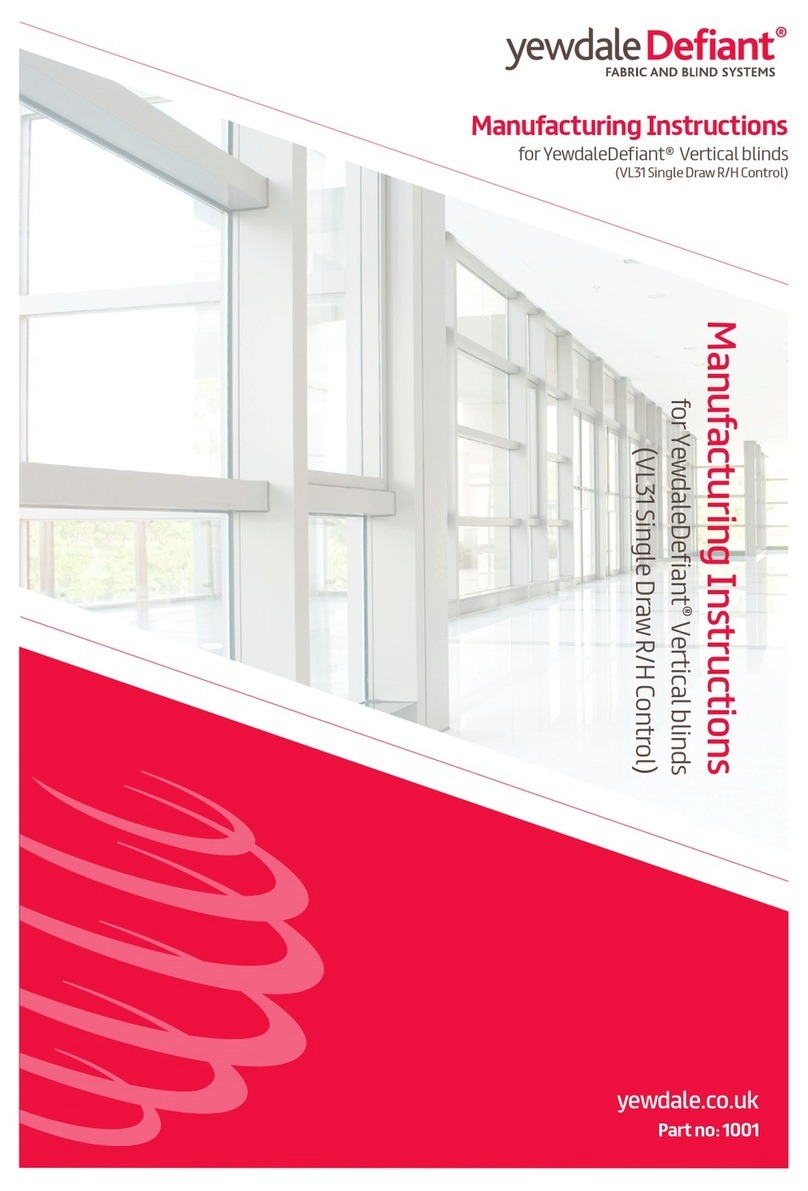
YewdaleDefiant
YewdaleDefiant VL31 Single Draw R/H Control Manufacturing Instructions
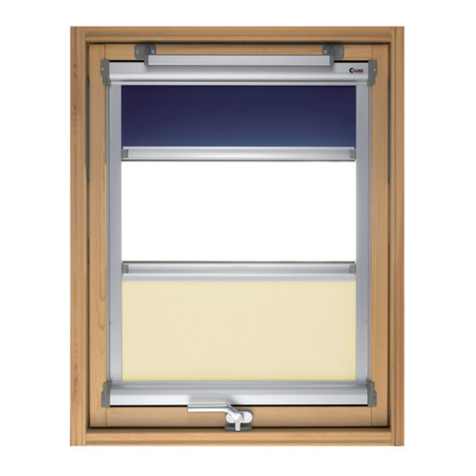
Claus
Claus NEW DARKENING BLIND Instruction for correct Installation and Use

Motion
Motion CM-03-E Setup guide

curtain & blind
curtain & blind Eco PVC Shutter Installation
